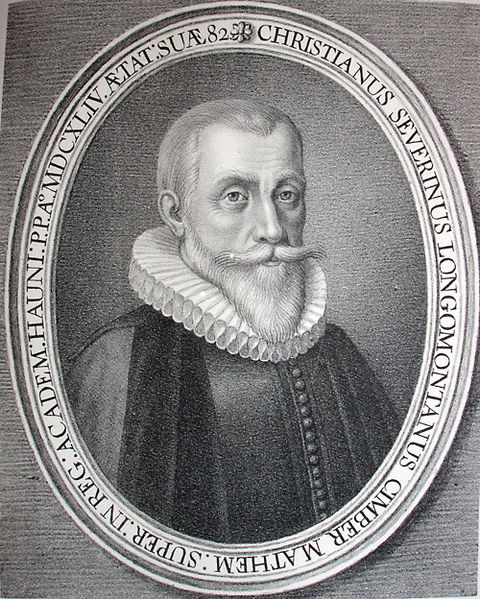<Back to Index>
- Astronomer Christen Sørensen Longomontanus, 1562
- Painter Lucas Cranach the Elder, 1472
- Prime Minister of France François Pierre Guillaume Guizot, 1787

Christen Sørensen Longomontanus (or Longberg) (October 4, 1562 – October 8, 1647) was a Danish astronomer.
The name Longomontanus was a Latinized form of the name of the village of Lomborg, Jutland, Denmark, where he was born. His father, a laborer called Søren, or Severin, died when he was eight years old. An uncle took charge of the child, and had him educated at Lemvig; but after three years sent him back to his mother, who needed his help to work the fields. She agreed that he could study during the winter months with the clergyman of the parish; this arrangement continued until 1577, when the ill-will of some of his relatives and his own desire for knowledge caused him to run away to Viborg. There he attended the grammar school, working as a labourer to pay his expenses, and in 1588 went to Copenhagen with a high reputation for learning and ability. Engaged by Tycho Brahe in 1589 as his assistant in his great astronomical observatory of Uraniborg, he rendered invaluable service for eight years. Having left the island of Hven with his master, he obtained his discharge at Copenhagen on June 1, 1597, in order to study at some German universities. He rejoined Tycho at Prague in January 1600, and having completed the Tychonic lunar theory, turned homeward again in August.
He visited Frauenburg, where Copernicus had made his observations, took a masters degree at Rostock, and at Copenhagen found a patron in Christian Friis, chancellor of Denmark, who employed him in his household. Appointed in 1603 rector of the school of Viborg, he was elected two years later to a professorship in the University of Copenhagen, and his promotion to the chair of mathematics ensued in 1607. This post he held till his death.
Longomontanus was not an advanced thinker. He adhered to Tycho's erroneous views about refraction, believed that comets were messengers of evil, and imagined that he had squared the circle. He found that the circle whose diameter is 43 has for its circumference the square root of 18252 which gives 3.14185 ... for the value of π. John Pell and others tried in vain to convince him of his error. He inaugurated, at Copenhagen in 1632, the erection of a stately astronomical tower, but did not live to witness its completion. King Christian IV of Denmark, to whom he dedicated his Astronomia Danica, an exposition of the Tychonic system of the world, conferred upon him the canonry of Lunden in Schleswig.
However, it was Longomontanus who really developed Tycho's geoheliocentric model empirically and publicly to common acceptance in the 17th century in his 1622 astronomical tables. When Tycho died in 1601, his program for the restoration of astronomy was unfinished. The observational aspects were complete, but two important tasks remained, namely the selection and integration of the data into accounts of the motions of the planets, and the presentation of the results on the entire program in the form of a systematic treatise. Longomontanus, Tycho's sole disciple, assumed the responsibility and fulfilled both tasks in his voluminous Astronomia Danica (1622). Regarded as the testament of Tycho, the work was eagerly received in seventeenth century astronomical literature. But unlike Tycho's, his geoheliocentric model gave the Earth a daily rotation as in the models of Ursus and Roslin, and which is sometimes called the 'semi-Tychonic' system. As an indication of his book's popularity and of the semi-Tychonic system, it was reprinted in 1640 and 1663. Having originally worked on calculating the Martian orbit for Tycho with Kepler, he had already modelled its orbit to within 2 arcminutes error in longitude in his geoheliocentric model when Kepler had still only achieved 8 arcminutes error in his heliocentric system. Some historians of science claim Kepler’s 1627 Rudolphine Tables based on Tycho Brahe’s observations were more accurate than any previous tables. But nobody has ever demonstrated they were more accurate than Longomontanus’s 1622 Danish Astronomy tables, also based upon Tycho’s observations.